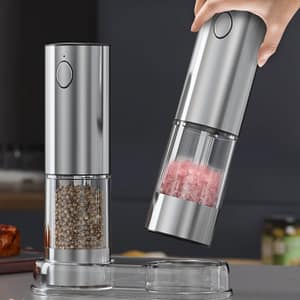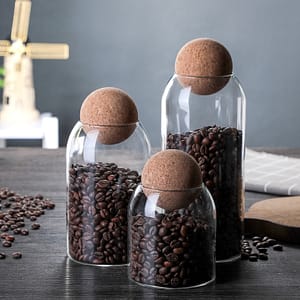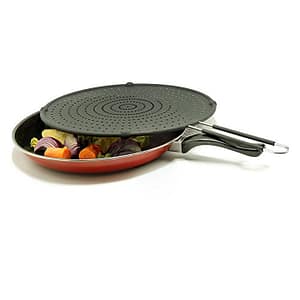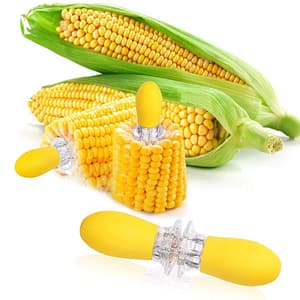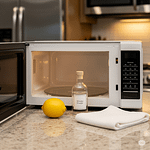
Blog Details
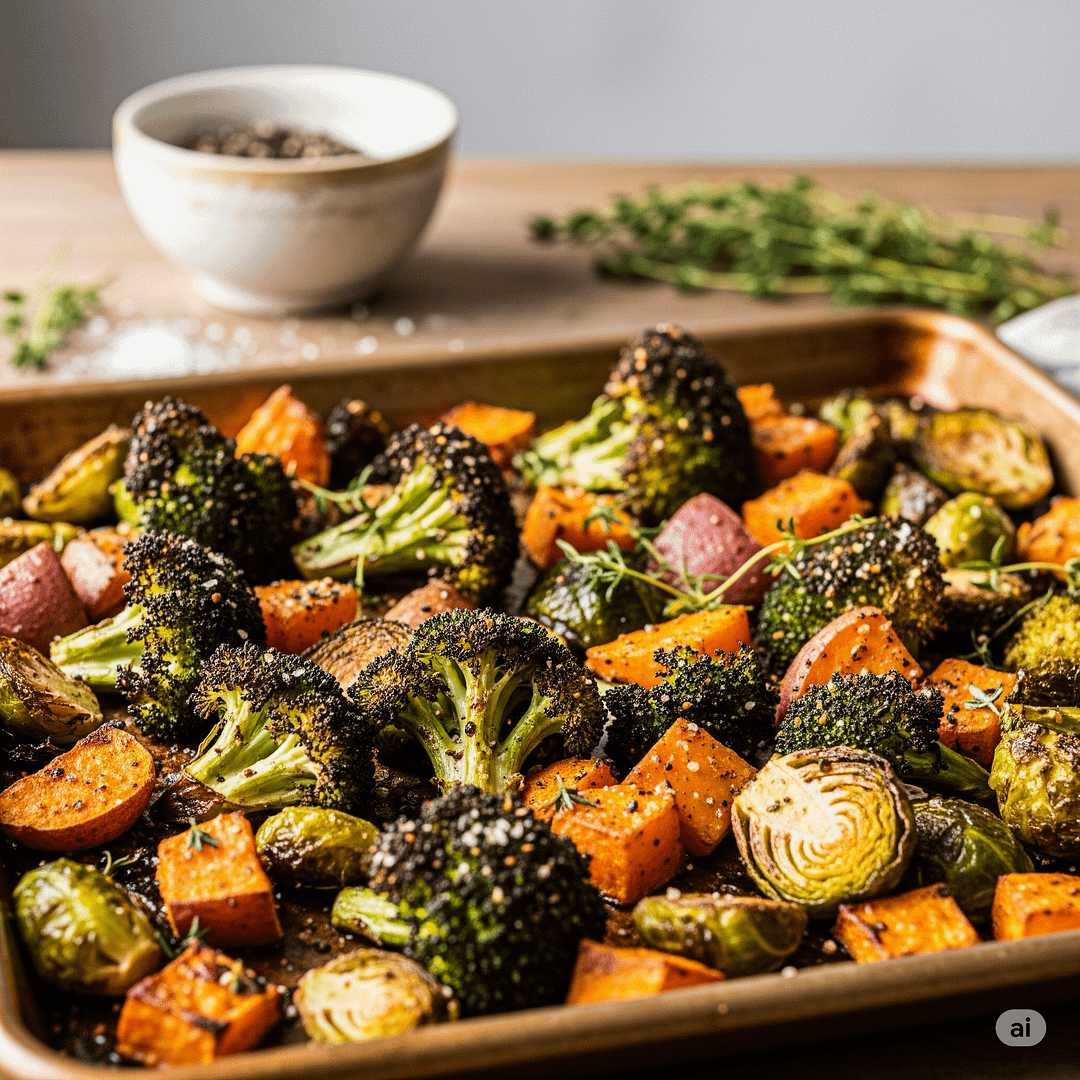
Why Your Roasted Veggies Aren’t Crispy
There’s nothing quite like perfectly roasted vegetables: tender on the inside, with beautifully caramelized, crisp edges that sing with flavor. Yet, for many home cooks, the reality often falls short. Instead of golden-brown perfection, you end up with a sad, soggy mess. If you’ve ever wondered “Why aren’t my roasted vegetables crispy?” you’re not alone. It’s a common culinary frustration, but the good news is, the path to crispy veggie nirvana is simpler than you think.
Let’s dive into the common culprits turning your roasting ambitions into a watery disappointment and how to fix them!
Culprit #1: Overcrowding the Pan
This is hands down the most frequent offender. We all do it – trying to fit too many veggies onto one sheet pan to save time or dishes. But when you pack vegetables too tightly, they steam instead of roast. The moisture released from the vegetables has nowhere to escape, creating a humid environment that prevents crisping.
- The Fix: Give your veggies space! Spread them in a single layer with plenty of room between each piece. If you have a lot of vegetables, use two or more sheet pans. It might seem like extra work, but it’s crucial for air circulation and moisture evaporation.
Culprit #2: Too Much Moisture
Vegetables, especially fresh ones, contain a lot of water. If you don’t address this initial moisture, it will prevent them from browning and crisping. Washing your veggies and immediately tossing them onto a pan without drying is a recipe for sogginess.
- The Fix: Dry your vegetables thoroughly! After washing, pat them down with a clean kitchen towel or paper towels. For high-momoisture veggies like zucchini or mushrooms, you might even consider letting them air dry for a bit, or pre-roasting them slightly before adding oil and seasonings.
Culprit #3: Incorrect Oven Temperature (Too Low!)
Roasting requires high heat. A low oven temperature won’t provide the intense heat needed to evaporate moisture quickly and caramelize the sugars on the surface of your vegetables. This leads to a longer cooking time and, you guessed it, soggy results.
- The Fix: Preheat your oven to a high temperature, typically 400°F (200°C) to 425°F (220°C). Make sure your oven is fully preheated before you put the vegetables in. Some chefs even preheat the sheet pan itself in the oven for 5-10 minutes before adding the veggies, giving them an immediate sizzle on contact.
Culprit #4: Not Enough Fat (Or the Wrong Kind)
Fat is essential for crisping and flavor. It helps conduct heat, preventing sticking, and contributing to that desirable golden-brown crust. Not enough fat, or using a fat with a low smoke point, can hinder crispness.
- The Fix: Don’t be shy with the oil! Toss your vegetables thoroughly with a high smoke point oil like avocado oil, grapeseed oil, or light olive oil. Enough oil should coat every piece lightly. Use a good silicone brush to ensure even coating if you prefer not to use your hands, helping every surface get kissed by the heat.
Culprit #5: Unevenly Sized Pieces
If you have a mix of large chunks and tiny slivers, the smaller pieces will burn before the larger ones are cooked through, or the larger ones will remain undercooked while the small ones are perfect.
- The Fix: Cut your vegetables into uniform sizes. This ensures they all cook at the same rate, leading to consistent texture and browning. For example, if you’re roasting carrots and potatoes, make sure their pieces are roughly the same size. A sharp chef’s knife from our store can make quick work of consistent chopping!
The Golden Rule: Don’t Forget to Flip (or Shake)!
While not a “culprit,” neglecting to turn your vegetables during roasting means only one side gets that direct contact with the hot pan, limiting crispness to just one surface.
- The Fix: Halfway through cooking (or more often for very moist veggies), flip or toss your vegetables with a spatula. This exposes different sides to the direct heat, promoting even browning and crispness all around.
By avoiding these common pitfalls and implementing these simple strategies, you’ll transform your roasted vegetables from soggy disappointments into dazzling, crispy delights. Get ready for a new favorite side dish!
Frequently Asked Questions About Crispy Roasted Vegetables
Can I use frozen vegetables for crispy roasting?
Yes, but it’s trickier! Frozen vegetables have a lot more moisture. For best results, thaw them completely and pat them extremely dry before tossing with oil and roasting at a high temperature (425°F/220°C or higher). You might need to extend cooking time slightly.
Should I use parchment paper or foil on my baking sheet?
Parchment paper is generally preferred. It prevents sticking, makes cleanup easy, and allows for better air circulation directly under the vegetables compared to foil, which can trap moisture.
My vegetables are browning but not getting tender inside. What’s wrong?
This usually means your oven temperature is too high for the size of your vegetable pieces, or you’re not cutting them uniformly. Try a slightly lower temperature (e.g., 400°F/200°C) and ensure all pieces are similar in size so they cook through at the same rate.
How do I get extra crispy potatoes?
For super crispy potatoes, after cutting and drying, consider par-boiling them for 5-7 minutes until slightly tender, then roughing up their edges in a colander before tossing with oil and roasting at a high temp. The roughed-up edges create more surface area for crisping.
Q5: Can I season my vegetables before or after roasting? A: Seasoni
Ready to get roasting? With these tips, you’ll be enjoying perfectly crispy, flavorful roasted vegetables in no time.
Our Products
-
Unique Book Coffee Cup – Stack of Books Design
₹1,681.00 – ₹1,695.00Price range: ₹1,681.00 through ₹1,695.00 Select options This product has multiple variants. The options may be chosen on the product page -
Salt & Pepper Electric Grinder – Rechargeable
₹2,435.00 Select options This product has multiple variants. The options may be chosen on the product page -
Glass Storage Jar – Cork Lid & Minimalist Design
₹2,563.00 Select options This product has multiple variants. The options may be chosen on the product page -
Food grade Silicone Splash Screen – Mess-Free Cooking
₹2,158.00 Select options This product has multiple variants. The options may be chosen on the product page -
Stainless Steel Corn Cob Holders – Mess-Free
₹1,086.00 Select options This product has multiple variants. The options may be chosen on the product page -
Silicone Donut Mold – Makes 6 Non-Stick Donuts
₹833.00 Select options This product has multiple variants. The options may be chosen on the product page
Products
-
Unique Book Coffee Cup – Stack of Books Design
₹1,681.00 – ₹1,695.00Price range: ₹1,681.00 through ₹1,695.00 Select options This product has multiple variants. The options may be chosen on the product page -
Salt & Pepper Electric Grinder – Rechargeable
₹2,435.00 Select options This product has multiple variants. The options may be chosen on the product page -
Glass Storage Jar – Cork Lid & Minimalist Design
₹2,563.00 Select options This product has multiple variants. The options may be chosen on the product page -
Food grade Silicone Splash Screen – Mess-Free Cooking
₹2,158.00 Select options This product has multiple variants. The options may be chosen on the product page




